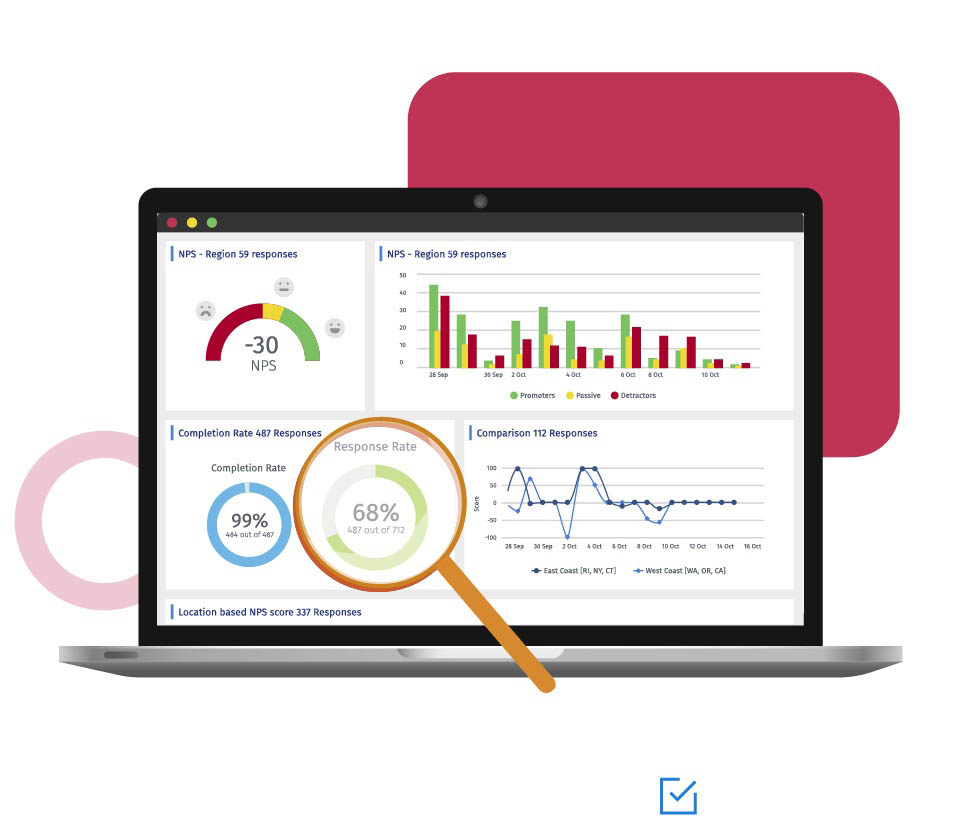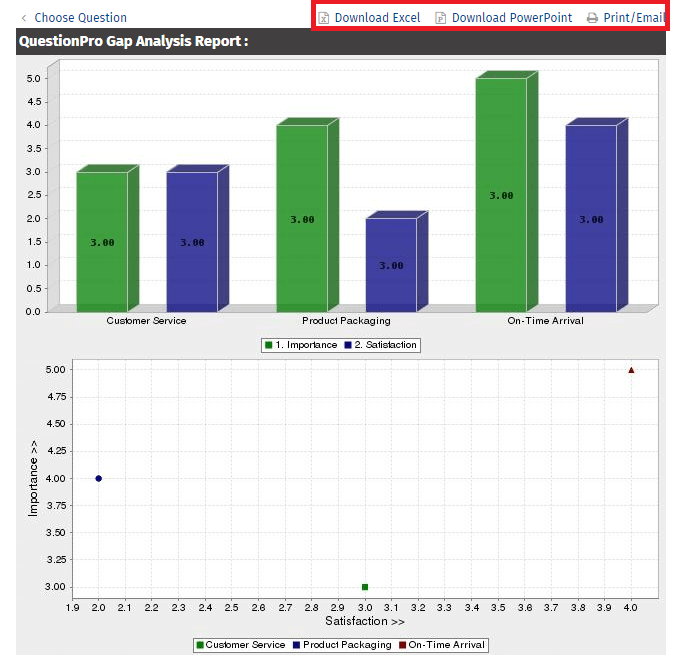Use gap analysis to understand what a product lacks and what it needs to excel in the market. Don’t just find out what didn’t work but also understand why it didn’t and identify steps to improve the processes. Make data-backed decisions with the gap analysis tool. Use QuestionPro’s side-by-side matrix in order to run a gap analysis.
Examples of gap analysis
While gap analysis can be used to measure the performance of various business areas (e.g. sales, accounting, HR, customer service), below are some examples to help you understand the broad range of how companies run a gap analysis:
Product launch: To determine the reason for gaps in sales and forecasts.
Productivity: To identify and fix processes that fail to meet expectations and customer needs.
Supply management: Identify reasons for regularly running short of raw materials for production.
Employee assessment: To identify gaps in employee performance and find the best practices to fix them.
Product evaluation: To ensure the smooth functioning of their product features and functions.
Let’s look at an example of the gap analysis report: To conduct a gap analysis with QuestionPro, use the side-by-side matrix question. The side-by-side matrix configures the system automatically and runs a gap analysis across the dimensions of the matrix. Download the report in excel, powerpoint, email, or print it.

The customer satisfaction example above compares two factors - the importance of the product versus satisfaction derived from it. A business can easily glance at items that have a high level of importance to customers but a low level of satisfaction and focus on improving that area.
Uses of gap analysis
A gap analysis is primarily used to identify improvement areas to boost the efficiency of the business. It’s also used to measure a product’s effectiveness and efficiency that directly impacts the profitability of the business. Use gap analysis to focus better on your resources and the areas of business that are lacking to improve them.
Businesses use gap analysis to satisfy the three questions:
Where does the business stand now?
Where does the business wish to be?
What must the business do to close the gap?
Businesses visualize these differences and maintain transparency with employees about the business growth and improvement areas.
Advantages of gap analysis
Gap analysis is a tool that’s used frequently by businesses to maintain their standards of processes, products, and services. Here are the business advantages of running a gap analysis.
Gain insights into areas of the business that need improvement. (eg: production, raw material handling, customer satisfaction, sales approach).
Ensure that all the planned requirements of a project are met.
Identify weak areas or areas with shortcomings and address them.
Find out the differences between what was planned and what delivered.
Uncover information to help decision-makers make better-informed decisions.
Understand areas of the business where you need to focus resources to boost profits.
How to use gap analysis in your surveys?
Learn how to set up and use this feature with our help file on gap analysis.
Survey Software Easy to use and accessible for everyone. Design, send and analyze online surveys.
Research Suite A suite of enterprise-grade research tools for market research professionals.
Customer Experience Experiences change the world. Deliver the best with our CX management software.
Employee Experience Create the best employee experience and act on real-time data from end to end.






